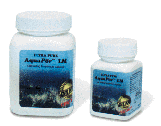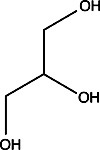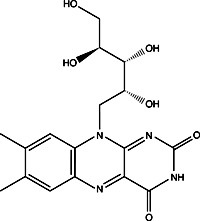Electrophoresis
AquaPor LM GTAC Agarose
$160.00 – $471.00
- Low Melting Temperature
- DNase and RNase free
- Exceptional Gel Strength for a Low Melt Agarose
- Fastest Dissolving
Description
- Low Melting Temperature
- DNase and RNase free
- Exceptional Gel Strength for a Low Melt Agarose
- Fastest Dissolving
AquaPor LM GTAC is a low melting temperature agarose for both large and small DNA fragments. For large fragments up to 25 kb, a 1% AquaPor LM solution forms a gel strong enough to be handled without fracturing. For separation of smaller fragments from 20 bp to 1,000 bp, AquaPor LM possesses low viscosity so that 3% or 4% gels can be made. DNA fragments separated in AquaPor LM may be immediately used for enzymatic manipulation in the presence of the remelted agarose. Ultra-fine particle size ensures fastest dissolution. AquaPor LM is certified to be DNase, RNase, and protease free. AquaPor LM is certified for in-gel PCR (re)amplification and in-gel ligation.
| Melt Temp (oC) | Gel Strength (g/cm2) | Gel Temp (oC) |
| ≤ 65 @ 1.0% | ≥ 450 @ 1.0% | ≤ 27 @ 1.0% |
Additional information
| Weight | 0.2 lbs |
|---|---|
| Dimensions | 6 × 3 × 3 in |
Protocol
DISSOLVING AQUAPOR AGAROSES
- Add room temperature buffer to a flask that is 2.5 – 4 times the volume of gel solution. Add a teflon-coated stir bar.
- Add AquaPor powder while stirring vigorously so the agarose is dispersed uniformly. Stir for 2 minutes to hydrate the agarose.
- Tare the flask and solution.
- Place in a microwave oven and heat at 100% power using 20 – 60 second intervals. Swirl gently between intervals to resuspend the agarose.
- Continue the cycle of heating and swirling until the agarose is completely dissolved (no visible particles are present).
- Add distilled water to obtain the initial weight and mix.
- Cool the solution to 50 – 60°C before pouring the gel.
* Chill the gel for 30 minutes prior to comb removal when using AquaPor LM, HR, and low (<1%) concentration of AquaPor LE and ES.
Safety Overview
EMERGENCY OVERVIEW – IMMEDIATE HAZARD
- UV Shadowing
- Using PAGE to Determine Nucleic Acid Molecular Weight
- Uneven Staining
- The Polyacrylamide Matrix-Buffer Strength
- The Polyacrylamide Matrix
- The Mechanical and Electrical Dynamics of Gel Electrophoresis — Electrophoresis System Dynamics
- The Mechanical and Electrical Dynamics of Gel Electrophoresis – Ohm’s Law
- The Mechanical and Electrical Dynamics of Gel Electrophoresis – Intro and Sample Mobility
- The Electrophoresis Matrix
- The Agarose Matrix
- Staining Proteins Immobilized on Membranes
- Staining Protein Gels with Coomassie Blue
- SSCP Analysis
- Southern Blotting
- Smeared Bands
- Silver Staining Protein Gels
- Silver Staining DNA Gels
- Sanger Sequencing
- Sample Preparation for SDS-PAGE
- Sample Preparation for Native Protein Electrophoresis
- Sample Preparation for Native PAGE of DNA
- Sample Prep for Denaturing PAGE of DNA
- S1 Mapping
- Run Conditions in Denaturing PAGE
- RNA Mapping
- RNA Electrophoresis
- Ribonuclease Protection
- Restriction Digest Mapping
- Radioactive Emissions and the Use of Isotopes in Research
- Protein Fixation on Gels
- Primer Extension
- Preparing Denaturing DNA & RNA Gels
- Preparation of Denaturing Agarose Gels
- Preparation of Agarose Gels
- Pouring Sequencing Gels
- Post-Electrophoretic Visualization with Nuclistain
- PFGE and FIGE
- Peptide Mapping
- PCR Analysis: Yield and Kinetics
- PCR Analysis: An Examination
- Overview of Western Blotting
- Northern Blotting
- Native Protein Electrophoresis
- Native PAGE of DNA
- Multiphasic Buffer Systems
- Mobility Shift Assay
- Methylation & Uracil Interference Assays
- Method for Western Blotting
- Mechanism of Immunostaining
- Mechanism of Immunostaining
- Measuring Molecular Weight with SDS-PAGE
- Maxam & Gilbert Sequencing
- Manual Sequencing
- Isotachophoresis
- Isoelectric Focusing
- In Gel Enzyme Reactions
- Immunostaining with Alkaline Phosphatase
- Immuno-Electrophoresis / Immuno-Diffusion
- Horizontal and Vertical Gel Systems – Vertical Tube Gels
- Horizontal and Vertical Gel Systems – The Vertical Slab Gel System
- Horizontal and Vertical Gel Systems – The Horizontal Gel System
- Homogeneous Buffer Systems
- Heteroduplex Analysis
- Guide Strip Technique
- Gel Preparation for Native Protein Electrophoresis
- Gel Preparation for Native PAGE of DNA
- Gel Electrophoresis of RNA & Post Electrophoretic Analysis
- Gel Electrophoresis of PCR Products
- Faint bands, low background
- Faint Bands, High Background
- Ethidium Bromide Staining
- Enzyme Linked Immunosorbent Assay (ELISA)
- Electrophoresis Buffers-Choosing the Right Buffer
- Electrophoresis Buffers–The Henderson-Hasselbalch Equation
- DNase I Footprinting
- DNA/RNA Purification from PAGE Gels
- DNA/RNA Purification from Agarose Gels – Electroelution
- Differential Display
- Denaturing Protein Electrophoresis: SDS-PAGE
- Denaturing Polyacrylamide Gel Electrophoresis of DNA & RNA
- Coomassie Blue Stain- Troubleshooting
- Conformational Analysis
- Casting Gradient Gels
- Buffer Additives-Surfactants
- Buffer Additives-Reducing Agents
- Buffer Additives-Hydrogen Bonding Agents
- Blotches on Gel
- Biological Macromolecules: Nucleic Acids
- Biological Macromolecules – Proteins
- Autoradiography
- Autoradiographic Enhancement with Autofluor
- Automated Sequencers
- Analysis of DNA/Protein Interactions
- An Overview of Northern and Southern Blotting
- Alkaline Blotting
- Agarose Gel Electrophoresis of DNA and RNA – Uses and Variations
- Agarose Gel Electrophoresis of DNA and RNA – An Introduction
- Activity Stains





